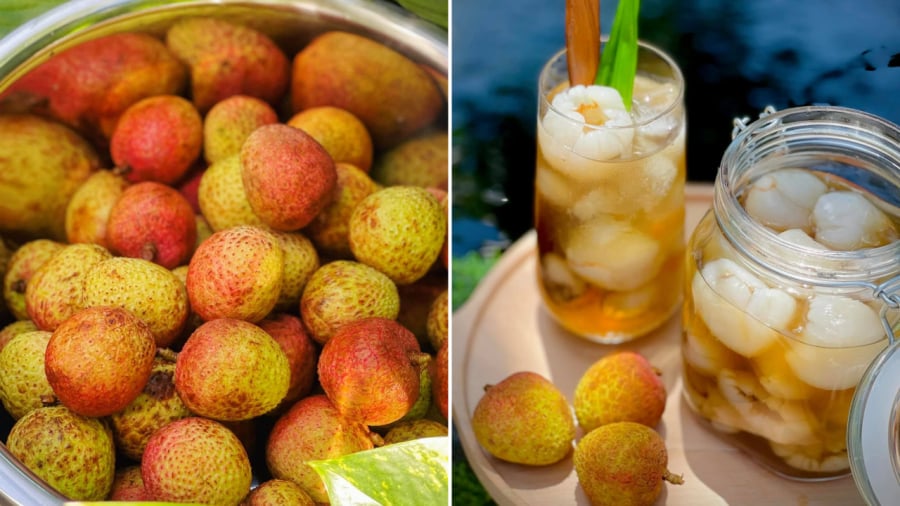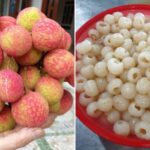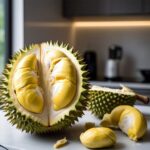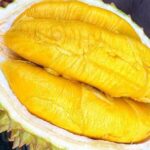Lychee is a quintessential summer fruit, beloved for its juicy, sweet flavor. Beyond enjoying them fresh, lychees are versatile and can be used to create delicious treats such as lychee jelly, lychee dessert soup, or preserved lychees.
Among these, preserved lychees are a delightful and easy-to-make treat that can be stored for extended periods. You can use preserved lychees to craft unique beverages.
When making preserved lychees at home, it’s essential to be meticulous during the preparation process and mindful of the ingredient ratio to ensure the lychees remain crisp and delicious, preventing fermentation and the formation of a membrane over time.
To make preserved lychees, you only need two simple ingredients: sugar and lychees. For a subtle sweetness, you can opt for rock sugar instead of regular white sugar. The ratio is essential: for every kilogram of lychees, use 800 grams of sugar. Sugar acts as a natural preservative, locking in the lychees’ delicious flavor.
How to Select Ripe Lychees
Look for lychees with supple branches and fresh leaves, indicating they are freshly harvested. Avoid clusters with wilted branches that break easily and have dry leaves.
Ideally, the lychees should be round and evenly shaped, with a reddish-pink hue. Ripe lychees will have prominent spines on their skin. The sharper and more abundant the spines, the riper the lychee, as less mature fruit tends to be sour.
When purchasing, gently squeeze the lychees to check for firmness. Ripe lychees will have a slight give without being mushy, and their flesh should be resilient. Ripe fruit will also emit a subtle, natural fragrance. Avoid lychees with a sour or fermented odor.
If possible, ask the vendor for a sample taste to ensure the lychees are sweet.
Lychee Preparation
Remove the stems from the lychees and rinse them thoroughly to eliminate any external dirt.
Boil a pot of water, ensuring there’s enough to submerge the lychees. While waiting for the water to boil, prepare a bowl of ice-cold water.
Once the water reaches a rolling boil, quickly blanch the lychees for about 2 minutes. This step helps mellow the lychees’ sourness, allowing them to better absorb the sugar and retain their crispness. After blanching, immediately transfer the lychees to the prepared ice water. Once cooled, drain the lychees in a colander.

Peeling and De-seeding Lychees
Carefully peel the lychees, then use a sharp knife or scissors to remove the seeds, taking care not to damage the delicate flesh.
Preserving Lychees in Syrup
In a pot, combine 1 liter of water with 800 grams of sugar. Cook over medium heat until the sugar dissolves completely, then remove from the heat and let the syrup cool down.
Arrange the lychees in clean jars, and pour in the cooled syrup, ensuring the lychees are fully submerged. It’s important to use sanitized jars; boiling them in water beforehand will ensure they are sterile. Store the jars in the refrigerator for about 2 days to allow the lychees to absorb the syrup, and then they’re ready to use.
Brewing Lychee Tea
Preparing lychee tea is simple. Grab a few tea bags of your choice and steep them in hot water.
Once the tea has infused, remove the tea bags and add the desired amount of preserved lychees and some of the lychee syrup to taste. For an extra refreshing touch, add ice cubes and even some of the preserved lychees to your drink. When serving, always use a clean, dry spoon to prevent contaminating the remaining lychees.
And there you have it—a delicious lychee tea that’s sure to impress!
Pickling Season: Learn the 3-Ingredient Method for Delicious, Year-Long Preserved Plums
Natural fermented vinegar is a delicious condiment that can enhance a variety of dishes. With just three simple ingredients, you can easily make your own fabric vinegar at home. Let’s explore this fascinating process and uncover the secrets to creating a tasty, versatile vinegar that will elevate your culinary creations.
The Exquisite Art of Crafting Mangosteen Tea: A Simple Guide to Mastering This Trendy Beverage
Sure, I can help you rewrite the given introductory paragraph with an engaging and SEO-friendly twist!
“The latest social media craze is all about the tangy and tasty mangosteen tea. Don’t miss out on this trending beverage! Our guide will walk you through the simple steps to crafting this delicious drink at home. It’s time to jump on the bandwagon and give this refreshing tea a try!”



































